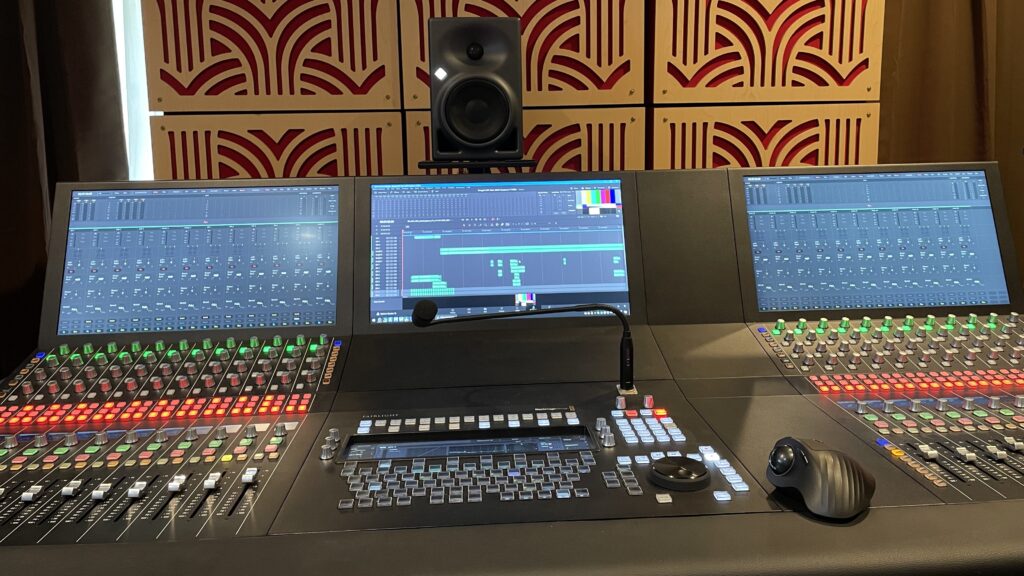Audio Post Production
Audio post-production services are typically provided by experienced sound engineers, editors, designers, and composers who utilize advanced digital audio workstations (DAWs) and specialized software to achieve the desired sonic results. Their expertise and creative skills ensure that the audio elements seamlessly integrate with the visuals and contribute to the overall storytelling and audience engagement.

Audio post-production is a crucial phase in the production process of various media forms, including films, television shows, podcasts, commercials, video games, and more. It involves enhancing and refining the audio elements to ensure high-quality sound and an immersive experience for the audience. Audio post-production services encompass a range of tasks and processes. Tim uses a Fairlight 3 Bay Console which features high-resolution audio processing, comprehensive automation, surround sound mixing, and integration with various digital audio workstations (DAWs) and software applications.
Dialogue Editing
This involves cleaning up and editing recorded dialogue tracks, removing background noise, adjusting volume levels, and ensuring clarity and coherence in the spoken words.Sound Effects Design and Editing
Creating and editing sound effects to enhance the overall audio experience. This may involve selecting and manipulating pre-recorded sound effects or designing custom sounds to match the visuals or narrative.Foley Artistry
Foley is the reproduction of everyday sound effects to enhance the realism of a scene. Foley artists create and record sounds such as footsteps, cloth movements, door creaks, and other interactive sounds to synchronize with the on-screen actions.Music Composition and Mixing
Composing original music scores or selecting and licensing appropriate music tracks to accompany the visuals. Mixing involves blending the music with other audio elements to achieve the desired balance and emotional impact.Ambience and Background Noise
Adding or enhancing background ambience to create a realistic environment. This includes capturing or selecting appropriate background sounds, such as cityscapes, nature, or room tone, to match the visuals and provide depth to the audio.Sound Mixing and Mastering
Balancing and mixing all the audio elements together, including dialogue, sound effects, music, and ambience, to create a cohesive and immersive sonic experience. Mastering involves finalizing the audio tracks for optimal playback across different platforms and formats.Voiceover Recording and Editing
Recording and editing voiceover tracks, such as narration or character voices, ensuring clarity, consistency, and synchronization with the visuals.Audio Restoration and Noise Reduction
Cleaning up and restoring poorly recorded audio to improve its quality. This may involve reducing background noise, removing clicks, pops, hums, or other unwanted artifacts.Surround Sound Mixing
Creating immersive audio experiences through multi-channel surround sound mixing for formats such as Dolby Atmos or other surround sound systems.Audio Format Conversion and Delivery
Converting and encoding audio files into various formats and specifications required for different distribution channels, such as theaters, broadcast, streaming platforms, or physical media.
